Researchers are combining textiles
and solar tech, but there's no one way to get there. From weave-able
solar cells to solar dyes, from handbags to smart houses—solar fabrics
could change the way we power our world.
One of the ways solar may creep further into our lives is through solar fabrics. Clothing that can charge your phone, awnings that can power streetlights, curtains that can cut a home's power consumption: these are all areas that researchers are exploring with the combination of solar with textiles.
Solar-Powered Filaments for Wearables
Associate Professor Jayan Thomas works in the NanoScience Technology Department at the University of Central Florida. He's been researching nano-architectured energy conversion and storage devices. The filaments that Dr. Thomas has created will be able to be woven into textiles, where they can harvest and store solar energy in batteries. Wearables could see an exponential growth and be revolutionized by this technology—if we can get the storage part down.The promising tech out of Thomas's lab is a ribbon-like device that has the capability to capture and store energy simultaneously. The material is weave-able and very flexible, which is ideal for clothing and other textiles. Thomas's design combines a supercapacitor and a solar cell inside the copper ribbon as opposed to using them in two separate devices. The solar cells generate electrons on one side of the ribbon and transfer them to the other side, where they are stored in the supercapacitor.
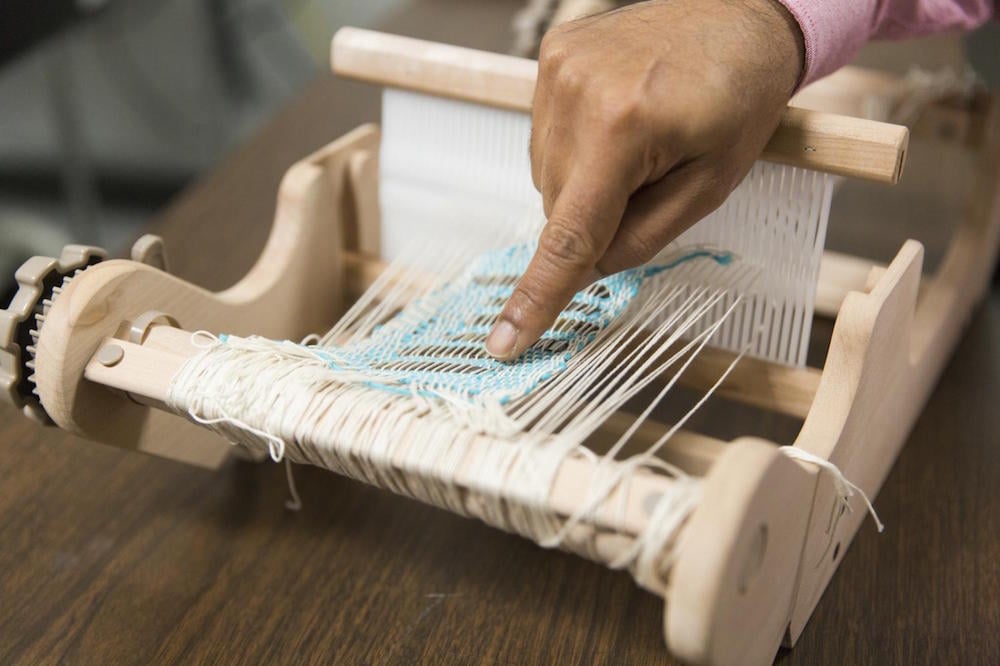
The woven filaments. Image courtesy of UCF
These filaments can be intertwined throughout your winter coat, t-shirt, or any other piece of clothing to power a variety of things. For everyday purposes, you could charge your phone off of this system.
But this tech could be used in a variety of ways, including military applications. If the military can reduce the sometimes more than 30 pounds off of a soldier's back by removing battery packs, this would increase their endurance.
Another application could be incorporating them into awnings over buildings' windows and doors. If the material in the fabric of these awnings could store and capture energy, outdoor lighting and other appliances could be charged to reduce the amount of electricity drawn from the grid.
Solar Fabrics in Smart Houses
The intersection between tech and fabric isn't a new space for researchers to explore. There are other disciplines interested in this marriage of tech and textiles, too. Sheila Kennedy is an architect and Professor of the Practice at MIT. For over a decade, Kennedy has been studying the use of solar fabrics in energy-efficient homes. Her designs use curtains inlaid with organic photovoltaic (OPV) nanotech to harvest solar energy in what's known as the "Soft House" Project.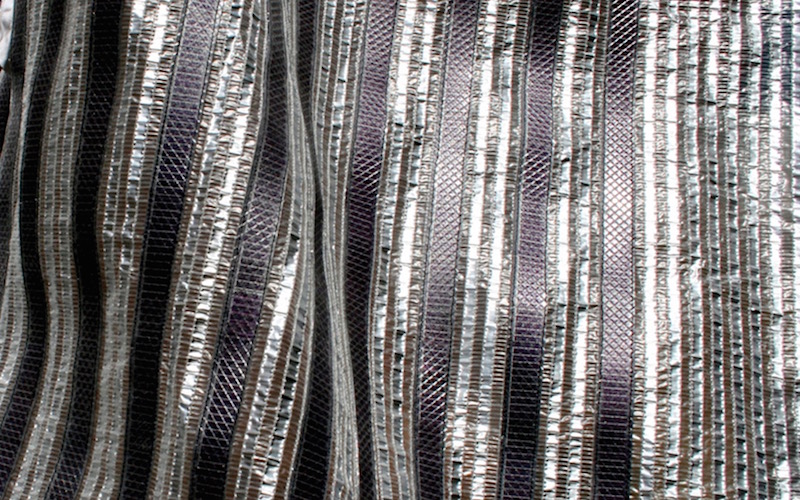
The solar cells embedded in curtains for the Soft House. Image courtesy of Kennedy & Violich Architecture, Ltd.
Kennedy's also been developing solar textiles to allow portable light and power to rural Brasilian communities via "solar textile kits", versatile solar-harvesting fabric kits that can be adapted into different shapes depending on use, including bags.
Dye-Based Solar Cells
Taking another tack is a duo of researchers who met at the University of Wisconsin—Madison. Designer Marianne Fairbanks had been developing commercially-available solar bags for years before becoming an assistant professor in Design Studies at UWM. As soon as she arrived, she sought out a partner to help her improve the solar technology in her designs. She found exactly what she was looking for in Trisha Andrew from the Chemistry department.Andrew has dedicated much of her budding career to developing lightweight solar cells. One of her most notable research areas has been in solar cells made from organic dyes, which Fairbanks wanted to try pairing with textiles.
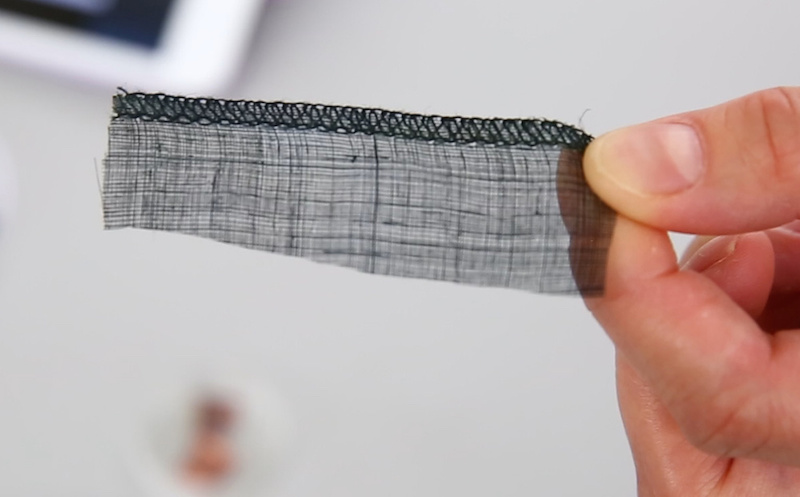
One of the base fabrics for the solar dye. Image courtesy of the University of Wisconsin—Madison.
Andrew has continued her research at the University of Massachusetts—Amherst, printing solar cells by combining nanoscale printing with optoelectronics for solar textiles.
Andrew and Fairbanks have also continued to collaborate, recently co-authoring "All-Textile Triboelectric Generator Compatible with Traditional Textile Process" (PDF)
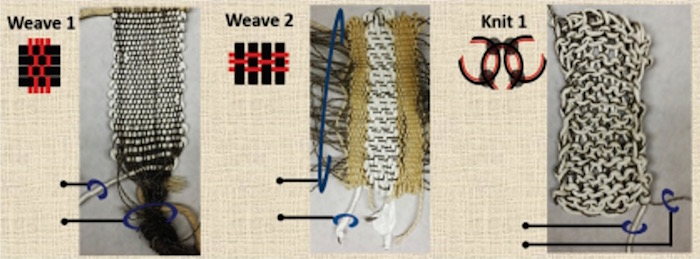
Examples of woven triboelectric textiles. Image courtesy of Marianne Fairbanks.
So far, not many solar fabrics have hit the market. As the technology progresses, perhaps we'll see more versions become available for designers to incorporate into devices.
Solar-powered jackets and bags have been floating around for years (such as the one below, created by Maier Sports) but many of been novelties, showing proof-of-concept.
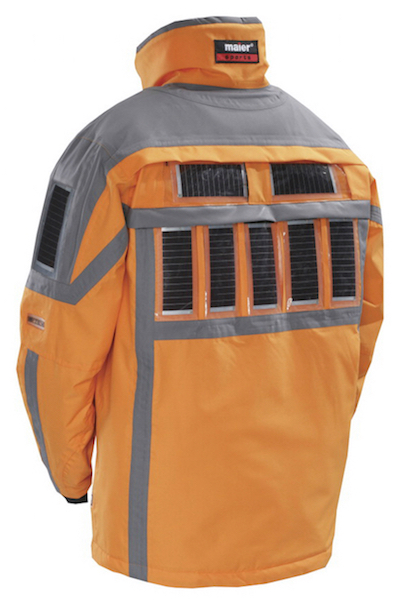
Image courtesy of Maier Sports
This is largely because thin, flexible solar cells are still quite expensive to make. In this case, it appears that the difference between prototypes and marketable products is what innovation comes out of researchers' labs and how engineers can utilize it in a cost-effective way.






No comments:
Post a Comment